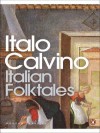7
Followers
8
Following
Sacred Space
Joseph Campbell said: "Your sacred space is where you can find yourself again and again." This is my sacred space, in the midst of a jumble of books of no particular denomination in a cavernous dimly-lit library hall, whiling my time away among the musty pages while the world busy destroying itself outside. You are welcome, fellow reader, to share this space.
 The story of star-crossed lovers on two sides of a divide during a turbulent historical period is the staple of many an historical novel. The Thousand Autumns of Jacob de Zoet, at first glane, is just that: however, the author has entered uncharted waters by venturing into an area which is seldom explored in historical novels, by choosing Japan during her international isolation as the venue and making the clerk of the erstwhile Dutch East India company, the unlikely hero.
The story of star-crossed lovers on two sides of a divide during a turbulent historical period is the staple of many an historical novel. The Thousand Autumns of Jacob de Zoet, at first glane, is just that: however, the author has entered uncharted waters by venturing into an area which is seldom explored in historical novels, by choosing Japan during her international isolation as the venue and making the clerk of the erstwhile Dutch East India company, the unlikely hero.Jacob de Zoet has joined the Dutch East India Company as a clerk, due to reasons common to many young men of his generation: in the hope of making a quick fortune to marry the girl of his dreams. But all too soon he discovers that to proceed in his career, he has to sell his soul to the devil. He is that anomaly, an honest man in a European commercial enterprise in a corrupt era. Jacob refuses to do this, and falls afoul of his superiors, ruining his bright career chances: to compound his woes, he falls in love with Orito Aibagawa, a Japanese midwife with a burn disfiguring half her face. His already hopeless suit becomes even more impossible when Orito is sold into virtual slavery at the Mount Shiranui shrine to pay off her dead father's debts by her stepmother. Deliverance comes for Jacob and Orito, however, at the end, but not in any way envisaged by them.
Mitchell's novel is panoramic in sweep and flawless in execution. His technique is cinematic: sentences follow the principles of montage, so that each thought process of a character, each speech is interspersed with happenings in the surroundings (in fact, all the while I was reading this novel, I was running a movie in my mind: especially part two in the Shiranui shrine which was in Multicolour and Panavision and directed by Kurosawa). This, along with the fact that it is written entirely in the present tense, gives a sense of immediacy to the narrative. The characterisation is also terrific; especially the villain, Enomoto, is worthy of Amrish Puri!
Then why the three stars? Well, IMO, what the novel provides in technique it misses in substance. For all its page-turning suspense and colourful background, I found the story to be rather lacking in a central focus. I was confused at the end on what the author was trying to say through this novel. After rising to a satisfying plateau through parts one and two, part three was a partial let-down: and the resolution was totally unsatisfying. Let us just say that Mitchell raised my hopes only to dash them to the ground.
Maybe my high hopes at the beginning made my review a trifle harsh. But don't be put off, it's a good read anyway.




